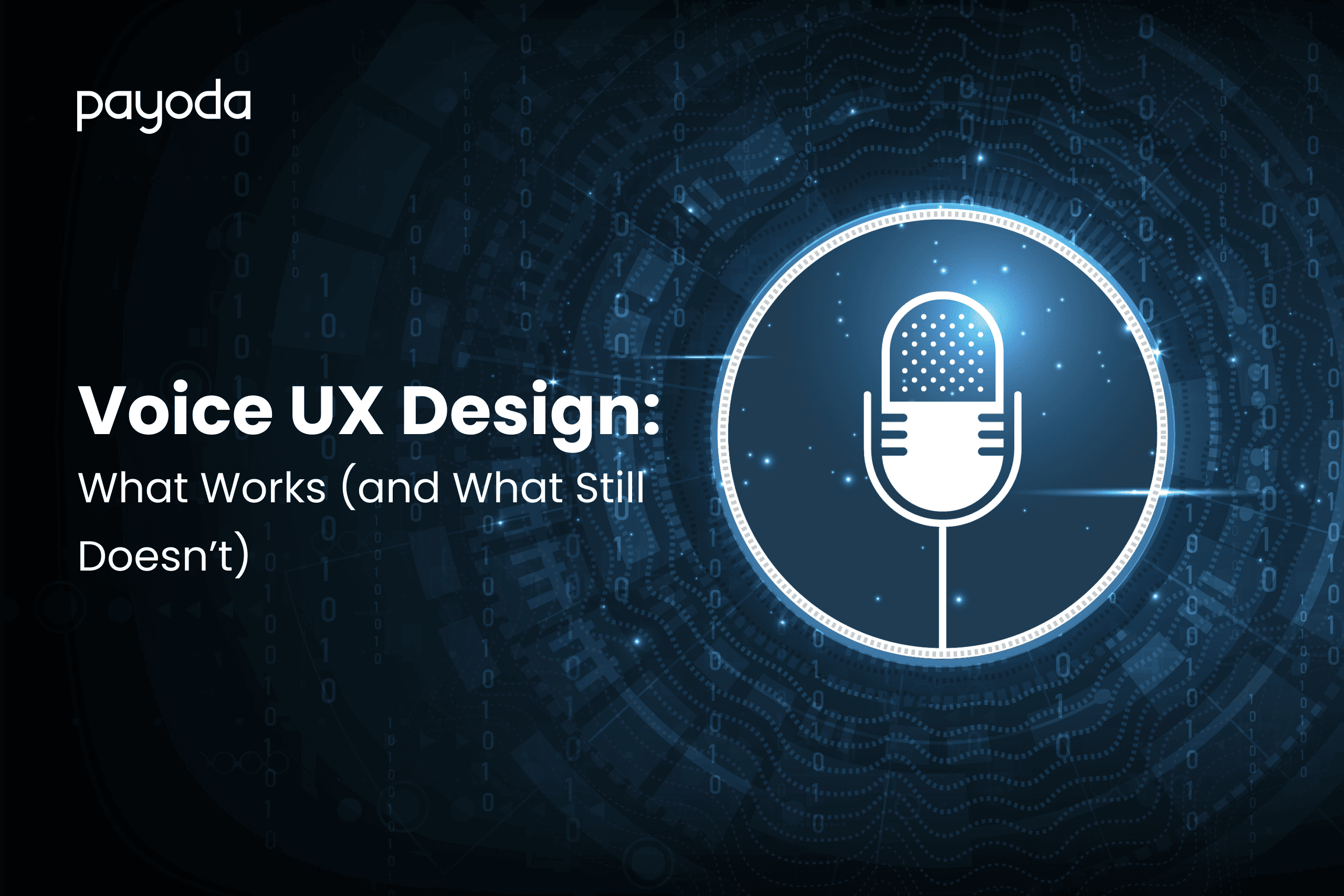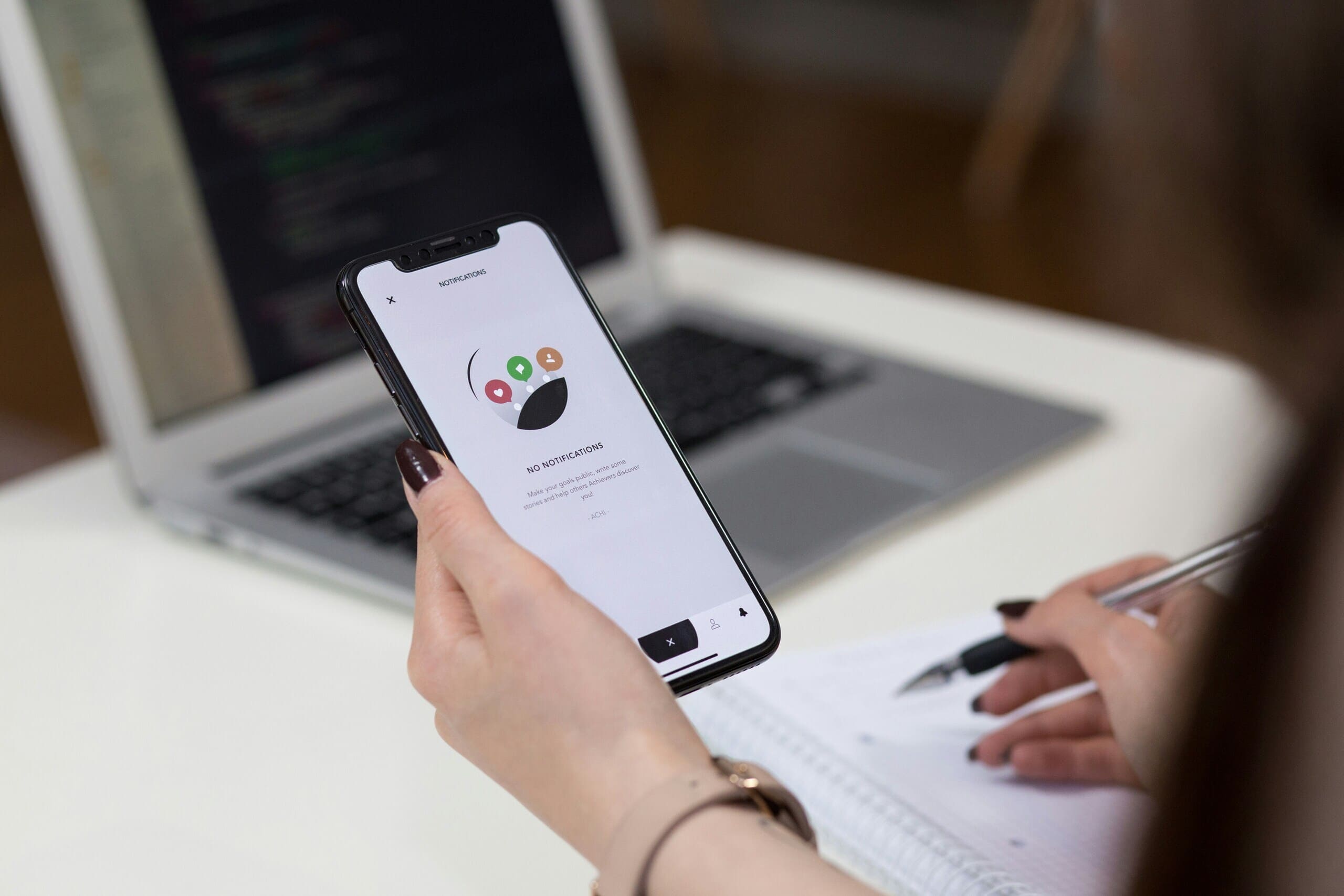
Voice UX Design has come a long way, from being a futuristic novelty to becoming an essential part of everyday digital interactions. What started with Apple’s Siri and Amazon’s Alexa has now evolved into sophisticated, AI-powered assistants like Google Assistant and ChatGPT’s voice mode. Today, people use voice interfaces not just for convenience, but as a preferred method for tasks like setting reminders, navigating traffic, controlling smart devices, or even composing messages.
As this technology matures, user expectations are growing just as fast. This blog explores what’s working in Voice UX Design, what still presents challenges, and how innovation-driven teams, like us at Payoda Technologies, can design smarter, more intuitive multimodal voice interfaces for a voice-first future.
What’s Working Well in Voice UX Design
1. Hands-Free Convenience
One of the biggest advantages of voice interfaces is their hands-free utility. Whether users are driving, cooking, or multitasking, simple voice commands like “Set a timer for 10 minutes” or “Play my playlist” create real, immediate value.
2. Advanced Natural Language Understanding (NLU)
Thanks to advancements in AI, modern voice assistants interpret natural language, regional accents, and contextual nuances better than ever. Assistants like Alexa, Google Assistant, and ChatGPT Voice now understand multi-step queries, improving the overall Voice UX Design significantly.
3. Fast Task Execution
Voice excels at quick, transactional tasks. Setting alarms, checking the weather, or turning on smart devices happens almost instantly, making voice interaction an effective productivity tool.
4. Multimodal Voice Interfaces
Devices such as the Google Nest Hub and Amazon Echo Show combine voice interaction with visual elements. These multimodal voice interfaces provide visual feedback and confirmations, enhancing user confidence and making Voice UX Design more flexible and accessible.
5. Accessibility and Inclusion
For users with motor or visual impairments—or even temporary limitations—voice interaction bridges the gap. By eliminating the need for touch or vision, voice UX promotes inclusive digital experiences for all.
What Still Needs Improvement in Voice UX Design
1. Limited Discoverability
Unlike visual UIs, voice interfaces don’t display options on-screen. As a result, users often feel uncertain about what commands are possible, especially during their first interactions.
2. Error Handling and Recovery
When voice assistants mishear or misunderstand a command, responses like “Sorry, I didn’t catch that” quickly frustrate users. A lack of graceful error recovery reduces trust in the system.
3. Poor Context Retention
Many voice interfaces still struggle to maintain contextual flow across multiple interactions. Repeating information breaks the natural rhythm and impairs the overall user experience.
4. Privacy Concerns
With always-on microphones, privacy becomes a major concern. Without transparent data practices and user-controlled settings, adoption in sensitive environments like workplaces remains limited.
5. Lack of Standardization
The behavior of voice assistants varies across platforms like Siri, Alexa, and Google Assistant. This inconsistency complicates learning curves and deters seamless user adoption.
Best Practices for Effective Voice UX Design
To design voice-first experiences that truly resonate with users, consider the following Voice UX Design best practices:
- Use short, natural language prompts.
- Build confirmation and feedback loops (e.g., “Setting your alarm for 6 AM”).
- Provide discoverability cues (e.g., “Try asking about your calendar today”).
- Implement fallback mechanisms or offer a visual interface handoff.
- Avoid robotic tones—infuse subtle personality, but don’t overdo it.
The Future of Multimodal Voice Interfaces and Voice UX Design
As voice technology evolves, multimodal voice interfaces will take center stage. By combining voice commands with screen-based visuals, designers can create experiences that are more intuitive and error-resistant. Furthermore, we can expect:
- AI to personalize responses based on user history, preferences, and context.
- Empathetic systems that detect tone and emotion for more human-like responses.
- Transparent, opt-in privacy features that empower users to control their data.
- Expansion into healthcare, manufacturing, logistics, and other high-impact industries.
Shaping the Future with Payoda Technologies
At Payoda Technologies, we are pioneering the future of Voice UX Design by building intelligent, secure, and human-centered voice-first experiences. By focusing on usability, trust, and real-world utility, we empower users across industries to achieve more hands-free.
Let’s co-create the next generation of multimodal voice interfaces that are not just smart, but truly human.
Talk to our solutions expert today.
Our digital world changes every day, every minute, and every second - stay updated.









